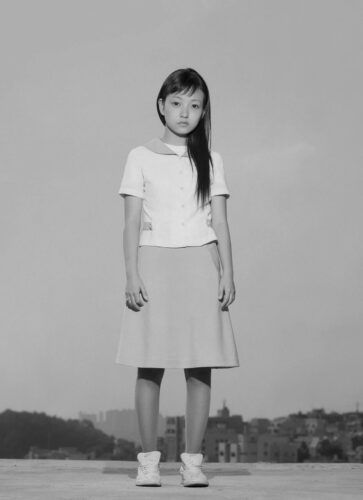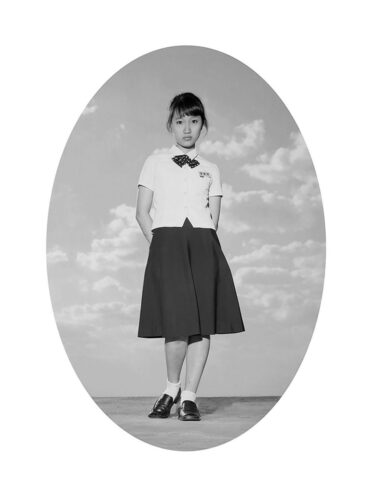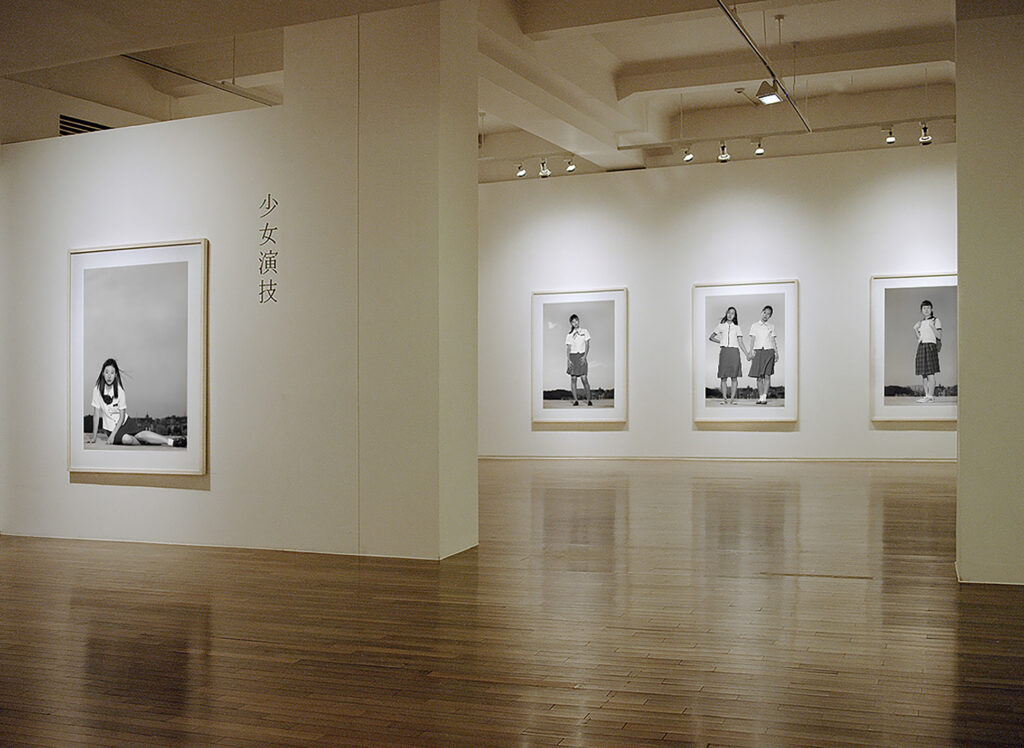Strategy of Behavior and Photographic Gaze :
Oh, Hein-Kuhn’s Girls’ Act Series
Young June Lee
Behind every portrait photographer’s camera lurks a desire to capture the strategy of vision employed by the subject. In many cases this strategy is misunderstood to be the expression of the deep hidden interior of the subject. This strategy is purely about the vision thing. In common words, this strategy evolves around the discretion of what to show and what not to show. Here the strategy of deception is the strategy of truth as what one sees is based upon
what one is not supposed to see. Instead of unveiling the hidden aspect of the person, Oh, Hein-Kuhn is more interested in photographically analyzing the strategy of vision that forms the identity of the person. Rather than sympathizing with the person in the photograph, Oh treats her as something like a signboard or a facade. Therefore, in terms of dealing with the mask that is the frontispiece, portrait photography is similar to architecture photography. Even though the strategy of vision evolves around one’s true mask and true nature, this strategy amounts to stereotyped image of a person. The stereotype is the name given to a certain group of people who are believed to share a common character. The problem with the stereotype is that a certain fixity prevents one from thinking of diverse and minute differences working among individuals. The photographer’s task is not to create an abstracted stereotype but to see the differences working to form the identity of each individual person. Although the school girl is being dealt with as a cultural and conventional category in Oh, Hein-Kuhn’s series Girl’s Act, not only each person, but also minute details of the person are watched very closely by the photographer’s gaze. As a result, Oh’s photographic gaze strips bare the ‘Girl’ and what is left is only the ‘Act’. Here the ‘Act’ is the very formulation of the strategy of vision in its pure state.


The ‘Act’ is captured in two different strata of the photograph. The first strata is related with the way in which the school girls shape their identity. In spite of the penetrating power of photography that captures all the details of the subject, one is left with the hidden aspect of School girls. Even in the age of light speed communication, it is almost impossible to communicate with them transcending the barrier of cultural and generational difference. For as the communication grows active, the desire to shut oneself in one’s own closed cell becomes stronger. To capture the school girl’s act means going deeper into this special condition of being. The photograph is a very effective tool for this capture. The ‘Act’ is frozen and made possible to observe. It reveals another aspect of the School girls. They live under the presumption that some one is always taking picture of them. In other words, they live in a generalized gaze possible without a camera. Thus what we call a camera is simply an appropriation of the school girl picture already ready without a camera and film. That their act is captured in a photograph is an ‘event or an accident’ not only in that something extraordinary happens but also in the sense that an element of chance intervenes. Half a century ago the excursion for taking a picture was a big event, and today’s photographs are also an event in the same sense. Out of a certain karma a person stands in front of a camera and takes on a certain countenance and pose. A photograph is intriguing for its contingency. Therefore the school girls in Oh, Hein-Kuhn’s photographs belong to a moment that can not be generalized as a category or a stereotype of the school girl. Roland Barthes called this accidentalness of the moment in the photograph a Punctum. Ultimately, the photograph can not be understood. Why is that so? For the ‘Act’ of a person is in another order of the photograph. It is a photograph without camera, film or exposure. It is a crystallization of narcissistic, self-revealing attitude and its visualization in which the subject acts within or in front of the gaze. In every moment of life the school girl takes picture of herself. The crystallization of school girl-like attitude, taste, behavior and world view yields the picture that ‘is’ the school girl’s act. As long as she is always ready to come forward in the gaze, the her act always makes her a
photograph in it that fills the air like the atmosphere. Indeed, every human being behaves thinking that there is always a gaze from someone. That is why their act is visualized in their outfit and appearance. The school girls featured in Oh, Hein-Kuhn’s photographs are especially aware of such a gaze so as they are specifically interested in acting.

However, a simple fact of revelation will not make Oh’s photographic works interesting enough. In them we see something other than revelation. It is about unfolding. First, the school girls unfold their act of being a school girl. Second, the photographer unfolds his method of taking picture of them. Last, the photographs themselves unfold to form a series acts of repetition, semblance, differentiating and closure. In this three-way folds of unfolding, we see acting at its most complicated stage. At last, human act is a part of camera act. Oh, Hein-Kuhn is one of very few photographers who can capture both acts. We will watch his photographic act with curious eyes.
© 1989-2024 HEINKUHN OH